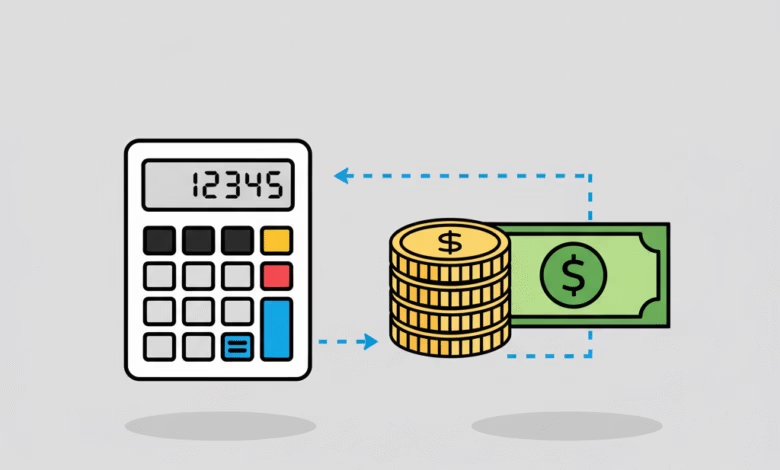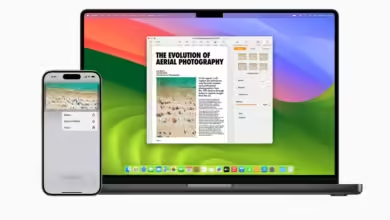What happens to stocks during hyperinflation?
Understand what hyperinflation is and how it impacts stock prices

In the world of finance, we often talk about inflation in measured terms—a few percentage points here or there. But there exists a far more monstrous and destructive economic phenomenon, a worst-case scenario that can wipe out a nation’s wealth in a matter of months: hyperinflation.
It’s a situation where prices don’t just rise; they explode. The value of money evaporates so quickly that people resort to carrying cash in wheelbarrows. It’s a rare but catastrophic event that feels like something from a history book or a distant, troubled country. But in this extreme environment, a strange and deceptive thing can happen to the stock market: on paper, it can look like it’s soaring to unbelievable new heights.
This creates a dangerous illusion, luring investors into a false sense of security. Are stocks the ultimate safe haven during hyperinflation, or are they a trap? This guide will dissect this complex scenario, exploring why stock prices initially surge and uncovering the brutal reality of what happens to your purchasing power when an economy collapses.
What is Hyperinflation? A Complete Loss of Faith in Currency

First, it’s critical to understand that hyperinflation is not just high inflation. The single-digit inflation we’ve experienced in the U.S. is manageable. Hyperinflation is a different beast entirely. While there’s no single definition, it’s generally described as a period when monthly inflation rates exceed 50%.
To put that in perspective, at a 50% monthly rate, an item that costs $1 at the beginning of the year would cost over $129 by the end of it. In the most extreme historical cases—like Weimar Germany in the 1920s, Zimbabwe in the 2000s, or modern-day Venezuela—prices can double in a matter of days or even hours.
What causes such a catastrophe? At its core, hyperinflation is not just an economic event; it’s a crisis of confidence. It’s the result of a complete and total loss of faith in a country’s currency, almost always caused by a government that is printing massive, unrestrained amounts of money to pay its bills. When people realize their cash is becoming worthless, they rush to get rid of it, creating a vicious cycle that pushes prices into the stratosphere.
The Initial Flight to Stocks: Why the Market Appears to Soar
In the early and intermediate stages of hyperinflation, a fascinating and predictable event occurs: the nominal value of the stock market often skyrockets. It’s not uncommon to see a country’s stock index post gains of 1,000%, 10,000%, or even more.
This happens for a very logical reason: stocks are not cash. They represent ownership in real businesses that own real assets. These assets include:
- Factories and real estate
- Machinery and equipment
- Inventory of goods
- Intellectual property like patents and brands
As the currency rapidly loses value, people desperately try to exchange their melting pile of cash for anything tangible that might hold its value. This is a “flight to safety,” but the safety they are seeking is in real assets, not the failing currency. For the average person, buying a factory is impossible, but buying shares in a company that owns factories is simple.
This massive rush of money out of cash and into the stock market creates a huge surge in demand for shares. Stock prices, which are quoted in the failing local currency, are bid up to astronomical levels. An investor might see their $10,000 portfolio turn into $1,000,000 and believe they’ve become rich. This, however, is where the dangerous illusion takes hold.
The Brutal Truth: When Nominal Gains Are Real-World Losses
The single most important concept to grasp about investing during hyperinflation is the difference between nominal returns and real returns.
- Nominal Return: This is the return you see on your screen, measured in the local currency. If your stock goes from $10 to $1,000, your nominal return is 9,900%.
- Real Return: This is your return after accounting for the devastating effects of inflation. It measures your actual increase in purchasing power.
Here’s a simple example that illustrates the trap:
- You invest $1,000 in the stock market.
- Over the next year, hyperinflation runs at 5,000%. During this time, your stock portfolio performs “brilliantly” and rises by 1,000% to a nominal value of $10,000.
- You feel wealthy. But now, consider the price of a loaf of bread. A year ago, it cost $2. Now, after 5,000% inflation, that same loaf costs $100.
A year ago, your $1,000 investment could have bought 500 loaves of bread. Today, your “rich” $10,000 portfolio can only buy 100 loaves.
Despite the massive nominal gains, your real purchasing power has collapsed by 80%. You haven’t made money; you’ve been wiped out. The stock market, in this scenario, did not protect your wealth; it only slowed down the rate at which you lost it.
How Hyperinflation Destroys the Businesses Behind the Stocks

The reason stocks ultimately fail to protect investors is that hyperinflation doesn’t just devalue a currency; it dismantles the entire economy in which businesses operate. A stock is only as strong as the underlying company, and in a hyperinflationary environment, even the best-run companies are brought to their knees.
Here are the mechanisms of that destruction:
Supply Chain and Operational Collapse
A business cannot function when its supply chain breaks down. Suppliers, knowing the local currency is worthless, will refuse to sell raw materials unless they are paid in a stable foreign currency (like the U.S. dollar) or through inefficient barter systems. It becomes impossible for a company to source the inputs it needs to make its products.
The Impossibility of Pricing
Imagine trying to run a business where the cost of your raw materials and your employees’ wages are doubling every week. How do you set a price for your product? If you price it too low, you sell at a loss. If you price it too high, no one will buy it. Normal accounting and business planning become meaningless, leading to massive operational losses or complete shutdowns.
Vanishing Consumer Demand
As the crisis deepens, the general population is impoverished. Their life savings are erased, and their wages, no matter how quickly they rise, cannot keep pace with the exploding cost of living. Demand for all but the most essential survival goods (like basic food and medicine) evaporates. Companies that sell cars, electronics, or services see their customer base vanish.
Frozen Markets and Capital Controls
To stop the flight of capital, governments in crisis almost always impose strict capital controls, making it illegal or impossible to convert the local currency into a foreign one or move assets out of the country. At the same time, the stock market itself may be shut down by the government for extended periods. This means that even if your stock has a high nominal value, it is completely illiquid. Your paper wealth is trapped and you cannot access it.
Are Some Stocks Better Positioned to Survive?
While the outlook is bleak for the market as a whole, not all stocks are affected equally. The companies with the best chance of preserving some real value share a few key characteristics:
- Significant Foreign Revenue: A company that exports its products and earns a large portion of its revenue in a stable foreign currency (like the U.S. dollar or Euro) is a true safe haven. These foreign earnings hold their value and can be used to pay for essential imports or be reinvested outside the collapsing domestic economy.
- Ownership of Hard Assets: Companies in extractive industries—like oil producers, gold miners, or producers of other essential commodities—tend to perform better. The value of their assets is a globally priced commodity, not tied to the whims of the local currency.
- Low Levels of Debt: Companies with little to no debt are more likely to survive. Businesses with large loans denominated in the local currency might see the real value of their debt inflate away, but they still need to operate in a completely dysfunctional economy.
The Real Safe Havens: Looking Beyond Domestic Borders

The harsh lesson from every historical hyperinflationary event is that during a complete currency collapse, the only reliable way to preserve wealth is to own assets that are outside of that country’s economic and monetary system.
For an investor facing such a crisis, true safe havens include:
- Foreign Stocks: Owning shares of companies in stable, well-run economies.
- Hard Assets: Physical gold and silver have been the ultimate store of value for centuries when fiat currencies fail.
- Stable Foreign Currencies: Holding a portion of your wealth in a globally respected currency like the U.S. dollar, Swiss franc, or Japanese yen.
- Foreign Real Estate: Owning property in a stable country.
A Cautionary Tale About Real Value
Hyperinflation is an economic nightmare and an extremely rare event for a stable, developed country like the United States. However, studying these extreme scenarios teaches us a universal and timeless investment lesson: never confuse nominal price with real value.
While domestic stocks may initially appear to be a refuge during hyperinflation, offering staggering paper gains, this is almost always an illusion. The economic chaos unleashed by a currency collapse ultimately destroys the businesses that give those stocks their value, leading to a catastrophic loss of real-world purchasing power.
The ultimate defense against such a scenario is true diversification—not just across different stocks, but across different asset classes, currencies, and countries. By understanding the profound difference between paper wealth and real wealth, you can build a more resilient portfolio prepared for any level of economic uncertainty.





